Aero L-39 Albatros
| L-39 Albatros | |
|---|---|
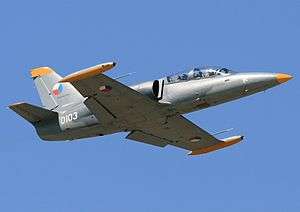 | |
| A Czech Air Force L-39C | |
| Role | Military trainer aircraft Light ground-attack aircraft |
| Manufacturer | Aero Vodochody |
| Designer | Jan Vlcek[1] |
| First flight | 4 November 1968 |
| Introduction | 28 March 1972 with the Czechoslovak Air Force[2] |
| Status | Out of production, in active use with various air forces |
| Primary users | Soviet Air Force Czechoslovak Air Force Libyan Air Force Syrian Air Force |
| Produced | 1971–1996[3] |
| Number built | 2,900[3] |
| Developed from | Aero L-29 Delfín |
| Variants | Aero L-39NG |
| Developed into | Aero L-59 Super Albatros Aero L-159 Alca |
The Aero L-39 Albatros is a high-performance jet trainer aircraft developed in Czechoslovakia by Aero Vodochody. It was designed during the 1960s as a replacement for the Aero L-29 Delfín as a principal training aircraft. The L-39 Albatros has the distinction of being the first of the second-generation jet trainers to be produced, as well as being the first trainer aircraft to be equipped with a turbofan powerplant. The type was widely exported to a wide range of international operators as a military trainer.
The L-39 Albatros later served as the basis for the updated L-59 Super Albatros, as well as the L-139 (prototype L-39 with Garrett TFE731 engine). A further development of the design, designated as the L-159 ALCA, entered production in 1997. To date, more than 2,800 L-39s have served with over 30 air forces around the world. The Albatros is the most widely used jet trainer in the world; in addition to performing basic and advanced pilot training, it has also flown combat missions in a light-attack role. Atypically, it has never received a NATO reporting name.
At the Farnborough Airshow in July 2014, Aero Vodochody announced the launch of the L-39NG, an upgraded and modernised version of the L-39.
Development
In 1964, Czechoslovakian aircraft manufacturer Aero Vodochody embarked on a new design project to meet the specified requirements for a "C-39" (C for cvičný – trainer), setting up a design team under the leadership of Jan Vlček. This aircraft was to serve as a replacement for the Aero L-29 Delfín, an early jet-powered trainer, as a principal training aircraft.[4][5] Vlcek envisioned the type, a twin-seat single-engine aircraft, being adopted as the primary trainer throughout the Warsaw Pact nations.[1]
On 4 November 1969, the L-39 (under the designation "Prototype X-02" – the second airframe to be built) conducted its maiden flight, for which it was piloted by Rudolf Duchoň, the factory's test pilot.[6][7] Serial production of the initial model of the L-39, designated L-39C, commenced in 1971. In 1972, the L-39 Albatros was formally recognized by the majority of the countries comprising the Warsaw Pact as their preferred primary trainer, after which point, sizable orders from military customers throughout the bloc proceeded, many of which were from the Soviet Air Forces.[1][3] In 1974, the first L-39 trainer entered service with the Czechoslovakian Air Force.[3]

Several specialised variants of the base L-39 design were quickly introduced. In 1972, a purpose-built target tug variant, the L-39V, conducts its initial flight.[3] In 1975, the first L-39ZO training/light combat model, which was equipped with four underwing hardpoints as well as a strengthened wing and modified landing gear, performed its first flight.[3] In 1977, the first L-39ZA light combat variant, which was fitted with a single Gryazev-Shipunov GSh-23 cannon mounted underneath the fuselage in addition to the four hardpoints and strengthening of the L-39ZO, made its maiden flight.[3][8][9]
According to aerospace publication Flight International, roughly 200 L-39s were being sold each year upon the jet trainer market during the late 1980s.[10] According to the Stockholm International Peace Research Institute, in 1993, the total export orders gained for the L-39 represented 80 per cent of the value of all Czech military product export sales made for that year.[11] During the 1990s, shortly following the dissolution of the Soviet Union and the end of the Cold War, Aero Vodochody decided to develop versions of the Albatros equipped with Western-sourced avionics, engines, and weapon systems.[10] Around the same time, an active partnership with Elbit Systems of Israel, under which a number of L-39s were delivered to Elbit to be equipped with modern electronics and onboard systems before being re-exported to end users such as the Royal Thai Air Force, had also proved to be productive.[12][13][14]
However, sales of the L-39 declined during the 1990s; much of the cause of this downturn in fortunes has been attributed to the loss of the captive Warsaw Pact trainer market, to which a substantial proportion of the total aircraft manufactured had been historically sold to, as well as allegations about Czechoslovakian banks being unable to finance the defense industry accordingly and inaction on the part of the Czechoslovakian government, as well as reports of concerns over the quality of manufacturing standards which were claimed to have limited sales.[10] In 1996, production of the L-39 came to an end.[3] Since production of the L-39 has ended, Aero Vodochody has developed several improved variants of the L-39 to take its place, as well as continuing extensive support and overhaul operations for existing L-39 customers.[15]
One of the replacements for the L-39 Albatros was the Aero L-159 Alca, a modernised version of the L-39.[16] Originally, Aero Vodochody had intended to develop the L-159 in partnership with Elbit, but the Czech Ministry of Defense instead selected Rockwell Collins to partner on the program.[17] The limited success of the L-159 led Aero to announce at the 2014 Farnborough Airshow that it was developing an upgraded version of the L-39, designated L-39NG, to compete with the Alenia Aermacchi M-346 and British Aerospace Hawk. The L-39NG replaces the AI-25 turbofan with a Williams FJ44 engine; the airframe is modified, the wingtip fuel tanks being eliminated, and a new suite of avionics will be provided. First flight is planned during 2016, with deliveries starting in 2018.[18]
Design

The L-39 Albatros was designed to be a cost-effective jet-powered trainer aircraft, which is also capable of performing ground attack missions. For operational flexibility, simplicity, and affordability, the majority of onboard systems have been simplified to avoid incurring high levels of maintenance, as well as to minimize damage caused by mishandling when flown by inexperienced air crew.[19] It could be readily flown from austere airstrips such as frozen lakebeds, enabled through the rugged design of the landing gear and favourable low landing speeds. The aircraft's flying qualities are reportedly simple, which is made easier by way of a rapid throttle response, making it easier for students who had never previously flown before to successfully control.[20] As a training platform, the L-39 itself comprised part of a comprehensive system which also used flight simulators and mobile ground test equipment.[7]
The low-set, straight wing has a double-taper planform, 2½-deg dihedral from the roots, a relatively low aspect ratio, and 100 litres (26 US gal; 22 imp gal) fuel tanks permanently attached to the wingtips. The trailing edge has double-slotted trailing edge flaps inboard of mass-balanced ailerons; the flaps are separated from the ailerons by small wing fences.[21] An automatic trimming system was present, the flaps and the trim system being connected in order to counteract the potentially large pitch changes that would otherwise be generated by vigorous movements of the flaps.[22] The tall, swept vertical tail has an inset rudder. Variable-incidence horizontal stabilizers with inset elevators are mounted at the base of the rudder and over the exhaust nozzle.[21] Side-by-side airbrakes are located under the fuselage ahead of the wing's leading edge. The flaps, landing gear, wheel brakes and air brakes are powered by a hydraulic system. Controls are pushrod-actuated and have electrically powered servo tabs on the ailerons and rudder. Operational g-force limits at 4,200 kilograms (9,300 lb) are +8/-4 g.[21]

A long, pointed nose leads back to the tandem cockpit, in which the student and instructor sit on Czech-built VS-1 ejection seats under individual canopies, which are opened manually and are hinged on the right.[22] The rear seat, typically used by the instructor, is elevated slightly to readily enable observation and guidance of the student's actions in the forward position.[21][23] The design of the cockpit, panel layout and many of its fittings resemble or are identical in function to those of other commonly-used Soviet aircraft, such as the procedure for deploying the ejection seat being exactly the same as that used upon the Mikoyan MiG-29.[24] The cockpit is highly pressurized, requiring the air crew to wear oxygen masks only when flying in excess of 23,000 feet.[25] A gyro gunsight for weapon-aiming purposes is typically present in the forward position only.[26]
A single turbofan engine, an Ivchenko AI-25TL (made in the Soviet Union) is positioned in the rear fuselage, fed through shoulder-mounted, semi-circular air intakes (fitted with splitter plates) just behind the cockpit and the tailpipe below the horizontal tailplane. The engine has a time between overhauls (TBO) of 1,000 flight hours, however, it is allegedly cheaper than the majority of turbine engines to overhaul.[27] Five rubber bag fuel tanks are located in the fuselage behind the cockpit. Several heavy radio units are typically installed in an aft avionics bay, these are often removed on civilian-operated aircraft and replaced with a 70-gallon fuel tank instead. Additional fuel tanks can be fitted in the rear cockpit position and externally underneath the wings, the tip-tanks can also be expanded for a greater fuel capacity.[25]
The aircraft is fitted with a hydraulically-actuated retractable nosewheel undercarriage which is designed to allow operation from grass airfields. The main landing gear legs retract inward into wing bays while the nose gear retracts forward.[21] The basic L-39C trainer has provision for two underwing pylons for drop tanks or practice weapons, but these are not usually fitted.[28] It can be armed with a pair of K-13 missiles to provide a basic air defense capability.[26] Light-attack variants have four underwing hardpoints for ground attack stores, while the ZA variant also has an underfuselage gun pod.[29] Mock UB-16 rocket pods can also be installed for visual appearance only.[23]
Operational history


Abkhazia
In the spring of 2008, a number of Georgian drones were shot down by Abkhazian separatist forces over the Abkhazia region. The Abkhazian separatist forces claimed that one of its missile-equipped L-39s had shot down a Georgian Hermes 450 unmanned reconnaissance drone.[30]
Afghanistan
The Taliban Air Force had managed to obtain around five L-39C aircraft from the remnants of the former Democratic Republic of Afghanistan air force; with foreign technical support and pilots, these were placed into combat operations during the later stages of the 1996-2001 phase of the Afghan civil war against the Northern Alliance. In early 2001, only two of these reportedly remained operational.[31][32] Following the United States invasion of Afghanistan in 2001, a number of L-39s were inducted into the Afghan Air Force.[33][34]
Azerbaijan
A quantity of L-39s, along with older L-29s, were used extensively by Azeri forces to perform ground attack missions during the Nagorno-Karabakh War in the 1980s and early 1990s. A number of these were reportedly shot down by air defenses employed by the Nagorno-Karabakh Defense Army.[35] In September 2015, Aero Vodochody sought a large order for the latest model of the L-39 to Azerbaijan; by this point, Azerbaijan had a total of 24 airworthy L-39s remaining in service.[36]
Chechnya
The newly de facto independent Chechen Republic of Ichkeria found itself with dozens of L-39s (as well as several L-29s, three MiG-17s, two MiG-15UTIs, helicopters and other transport and civilian aircraft) left at Khankala and Kalinovskaya airbases by the Soviet Air Force in 1992.[37] Most of these, however, were reportedly abandoned or not in flyable condition, but during the August–November 1994 conflict between nationalist and pro-Russian forces L-39s were deployed and were possibly one of the few air attack (and possibly recce) elements on Dzhokar Dudayev's forces. At least one was reported as shot-down near Goragorsk on October 4 by a Strela-2 MANPADS fired by Doku Zavgayev's pro-Russian militia. The pilot, Col. Ali Musayev and the co-pilot Dedal Dadayev were killed.[38][39]
One of the main reasons that prompted the first Su-25 air raids that destroyed the Chechen air force on the ground, and started the Russian intervention, were preparations being performed by Dudayev's air force, which had been spotted by reconnaissance Sukhoi Su-24MRs. There were fears that these aircraft could slow or deter the Russian air and ground campaign, as well as the capability of several aircraft to conduct kamikaze attacks on Russian nuclear power plants (specifically via means of the ejection seat in most aircraft, notably the L-39, by filling them with explosives to act as improvised cruise missiles).[39]
Iraq
Iraq became the first export customer for the L-39 Albatros.[7] By mid 1970, the Iraqi Air Force had procured a considerable number of L-39 trainers, having transferred the bulk of their training activities onto the Czechoslovakian aircraft.[40] During the American-led invasion of Iraq in 2003, on 14 April 2003, a pair of United States Navy McDonnell Douglas F/A-18 Hornets attacked several L-29 and L-39 aircraft on the ground at an airfield near the city of Tikrit; these had been believed to have been modified to perform as delivery platforms for weapons of mass destruction.[41]
Libya
Libya acquired some 180 L-39ZOs around 1978 which served at Sabha and Okba Ben Nafi flying schools along with Yugoslav-made G-2 Galeb for advanced jet training and Italian-made SF.260s (for primary training).[42]
The L-39s were deployed during the Chadian-Libyan conflict, mainly to Ouadi Doum air base. During the final Chadian offensive in March 1987, the Chadians captured Ouadi Doum along with several aircraft (11 L-39s included) and Soviet SAM systems and tanks. A Chadian report to the UN, reported the aforementioned capture on 11 L-39s and the destruction (or downing) of at least four of them.[43]
In the midst of that conflict, on April 21, 1983 three LARAF Ilyushin Il-76TDs and one Lockheed C-130 Hercules landed at Manaus Airport, Brazil after one of the Il-76s developed technical problems while crossing the Atlantic Ocean. The aircraft were then searched by the Brazilian authorities: instead of medical supplies – as quoted in the transport documentation – the crate of the first of 17 L-39s bound for Nicaragua together with arms and parachutes, to support the country's war against US-backed Contras, were found. The cargo was impounded for some time before being returned to Libya, while the transports were permitted to return to their country.[44][45] During the 1990s and 2000s, Libya made multiple attempts to get components and services for its air force in spite of an embargo placed upon the country by United Nations Security Council Resolution 748; by 2001, only half of Libya's L-39s were serviceable as a consequence.[46]
Russia
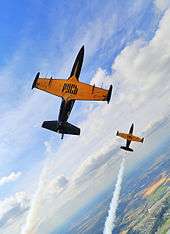
Following the dissolution of the Soviet Union and the formation of the Russian Air Force in 1991, the newly formed service found itself with hundreds of L-39 aircraft, the majority of which were surplus to their training requirements. According to author Stephan Wilkinson, by 2005, Russia was seeking to potentially sell up to 800 of their L-39s, which were receiving only a basic level of maintenance once per month while their fate was being decided.[47] Starting in the early 1990s, the Russian Air Force has pursued the development of a domestically-built jet trainer, for which the Yakovlev Yak-130 was selected; the Yak-130 shall eventually replace the L-39 in Russian service within its operational roles.[48][49]
Syria
The Syrian Arab Air Force has operated a number of armed L-39ZA light attack variants.[50] Since the early stages of the Syrian civil war, the Syrian Air Force's L-39 aircraft have been routinely deployed in counter-insurgency operations against various rebel ground forces, a number of these aircraft have also been shot down by ground fire. They were first used operationally during the Battle of Aleppo, launching several strikes upon rebel-held positions.[51][52][53] It has been claimed the L-39 was the first fixed-wing aircraft to be employed against the rebels.[54]
In February 2013, insurgents successfully captured a number of intact L-39s, along with their support equipment, after raiding and later taking over the Al-Jarrah airbase.[55][56] In late 2013, reports emerged of claims by Islamist fighters that they had successfully flown two of the captured L-39s.[57][58] In October 2014, the Syrian Government claimed that at least two rebel-held L-39s had been airworthy and had recently been destroyed by Syrian Air Force aircraft.[59]
According to Reuters, by 2014 the L-39 had allegedly become one of the favoured platforms of the Syrian Air Force for performing ground attack missions due to its slower speed and higher agility over other aircraft in its inventory; the L-39 was also being supplemented by deliveries of the newer Russian-built Yakovlev Yak-130.[60][61] In December 2015, following the securing of the Kweiris airbase by government forces, the resumption of ground-attack missions by L-39s in the vicinity of Aleppo commenced shortly thereafter.[54]
Civilian use
_Violated_Reno_Air_Race_2014_photo_D_Ramey_Logan.jpg)
While newer versions are now replacing older L-39s in service, thousands remain in active service as trainers, and many are finding new homes with private warbird owners all over the world. It has been claimed that the L-39's desirability stems from the fact that it is "the only available second-generation jet trainer".[23] This trend is particularly evident in the United States, where their $200,000–$300,000 price puts them in range of moderately wealthy pilots looking for a fast, agile personal jet.[62] Their popularity led to a purely L-39 Jet class being introduced at the Reno Air Races in 2002, though it has since been expanded to include other, similar aircraft.[63][64][65]
In September 2012 there were 255 L-39s registered with the US Federal Aviation Administration and four registered with Transport Canada.[66][67] Several display teams use the L-39 such as the Patriots Jet Team (6 L-39s), the Breitling Jet Team (7 L-39s) and the Black Diamond Jet Team (5 L-39s).[68][69] There are also several L-39s that have been made available for private jet rides by various operators in Czech Republic, France, Germany, Spain and the USA.[70][71][72] These L-39s are mostly in private hands, but some also belong to government agencies, such as those in Vyazma, Russia.[73][74]
Since 2004, the Defence & MRO Division of Aero Vodochody has performed a general maintenance, repair and modernisation program of civil-operated L-39s, as well as performing the demilitarisation of ex-military aircraft.[74] Services offered to civil operators include life-extension programs, support for civil registration/certification, training of ground/flight crew, logistics and analysis, customization, routine inspection, condition-based maintenance support, and providing general expertise/consultancy work.[74]
Variants
- L-39X-01 – X-07
- Five prototypes plus two static test airframes.[6]

- L-39C (C for Cvičná – training)
- Standard basic trainer for Soviet Union, Czechoslovakia and export. Originally designated L-39, but renamed L-39C when later variants appeared. Two pylons under wing. Approximately 2,260 built.[28]
- L-39CM (CM for Cvičná modernizovaná – modernised training)
- Slovak upgraded C version.
- L-39M1[75]
- Ukrainian upgraded C version with AI-25TLSh engines. The conversion is carried out by Odesaviaremservis and the first plane was ready in 2009. The upgrade of a further 7 L-39C's was planned.[76] Only six L-39C were converted into L-39M1 by 2014[77]
- L-39V (V for Vlečná – tug)
- Single-seat target tug version for Czechoslovakia. Equipped to tow KT-04 target on 1,700 m (5,600 ft) cable. Prototype plus eight production aircraft built.[78]
- L-39ZO (Z for Zbraně – weapons)
- Interim weapon trainer variant for export. Four pylons stressed for 500 kg (1,100 lb) (inboard) and 250 kg (550 lb) (outboard), with total external load of 1,150 kg (2,500 lb).[21] First flew 25 June 1975, with initial deliveries to Iraq in 1977. 337 built.[79]
- L-39ZA
- Significantly upgraded L-39ZO for armed training and light attack, employing sturdier landing gear, a higher payload (total 1,290 kg (2,844 lb))[21] and notably provision for a GSh-23L 23-millimeter twin-barreled cannon attached in a conformal pod under the pilots' compartment, having a 150-round magazine within the airframe. Outer pylons wired to carry K-13 or R-60 air-to-air missiles. Two prototypes, with first flying on 29 September 1976. 208 aircraft delivered.[80]
- L-39ZAM
- Slovak upgraded ZA version.
- L-39ZA/ART
- Thai version of L-39ZA with Elbit avionics. 40 built.[81]
- L-39MS/L-59
- The Aero L-39MS is a second generation military trainer aircraft developed from the firm's earlier L-39. Compared to its predecessor, it featured a strengthened fuselage, longer nose, a vastly updated cockpit, and a more powerful (21.6 kN (4,850 lbf)) Lotarev DV-2 engine, allowing operation at higher weights and speeds (max speed 872 km/h (542 mph)).[82][83] First flight on 30 September 1986. It was later designated as the Aero L-59.[84]
- L-139 Albatros 2000
- Revised version with western avionics and 17.99 kN (4,045 lbf) Garrett TFE731-4-1T engine. Single prototype built.[85]
- L-159
- Further modernised advanced trainer/combat aircraft with more modern, western avionics and Honeywell/ITEC F124 engine.[86]
- L-39NG
- Modernised and upgraded version with Williams FJ44 engine, improved fuel system and avionics, planned to be introduced in 2018.[87]
- Skyleader UL-39 Albi
- A carbon-fibre ducted-fan powered scale variant first flown in the Czech Republic on 4 April 2016.[88]
Operators

%2C_static_display%2C_Radom_AirShow_2005%2C_Poland.jpg)
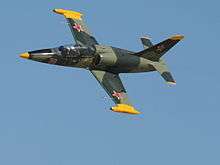
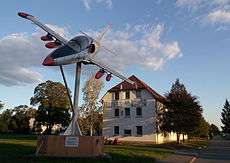
-
 Afghanistan
Afghanistan -
 Algeria
Algeria -
 Armenia
Armenia -
 Azerbaijan
Azerbaijan -
 Bangladesh
Bangladesh -
 Belarus
Belarus -
 Bulgaria [89] 12 L-39ZA
Bulgaria [89] 12 L-39ZA -
 Cambodia
Cambodia -
 Cuba
Cuba -
 Czech Republic
Czech Republic -
 East Germany Withdrawn from use in 1990.
East Germany Withdrawn from use in 1990. -
 Egypt
Egypt -
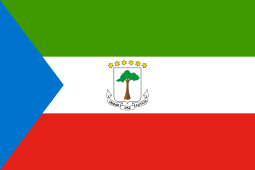 Equatorial Guinea
Equatorial Guinea -
 Estonia
Estonia -
 Ethiopia
Ethiopia -
 Georgia
Georgia -
 Ghana
Ghana -
 Hungary Withdrawn from use in 2009.
Hungary Withdrawn from use in 2009. -
 Iraq
Iraq -
 Kazakhstan
Kazakhstan -
 Kyrgyzstan
Kyrgyzstan -
 Libya
Libya -
 Lithuania
Lithuania -
 Latvia BALTIC BEES jet team.
Latvia BALTIC BEES jet team. -
 Mozambique
Mozambique -
 Nigeria
Nigeria -
 North Korea
North Korea -
 Romania
Romania -
 Russia
Russia -
 Slovakia
Slovakia -
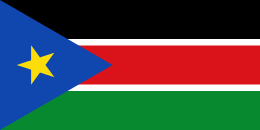 South Sudan
South Sudan -
 Syria
Syria -
 Tajikistan
Tajikistan -
 Thailand L-39ZA/ART (Westernized version, equipped with Israeli avionics[12])
Thailand L-39ZA/ART (Westernized version, equipped with Israeli avionics[12]) -
 Tunisia
Tunisia -
 Turkmenistan
Turkmenistan -
 Uganda
Uganda -
 Ukraine
Ukraine -
 United States (The Patriots Jet Team currently use six L-39s)
United States (The Patriots Jet Team currently use six L-39s) -
 Uzbekistan
Uzbekistan -
 Vietnam
Vietnam -
 Yemen
Yemen
Notable accidents and incidents
- On 26 September 1987, Mihai Smighelschi, a 21-year-old student of the Romanian Air Force Academy, flew an L-39ZA Albatros trainer to Turkey and requested political asylum. His aircraft was later recovered and onboard data recorders showed that he had flown no higher than 150 m (490 ft) above ground at 700 km/h (430 mph) to evade radar detection. Smighelschi had less than 100 hours at the time, including high-school glider training, and less than 3 hours on the L-39ZA. Without satellite navigation or any maps, he had navigated a straight line over Romania, Bulgaria and Turkey using only ground marks and the memory of a map of Europe present at the Academy. He eventually landed in Kirklareli, Turkey, on a street near several jeeps that seemed to have American insignia, damaging the aircraft's front wheel and the nose.[90]
- On 24 January 2001, Atlas Air Founder, Chairman, and CEO Michael A. Chowdry was killed when his Czech L-39 jet trainer crashed into an open field near Watkins, Colorado, USA. Also killed was Wall Street Journal aerospace reporter Jeff Cole. Chowdry and Cole were making a planned flight from Front Range Airport.[91][92]
- On 12 September 2015, Jay "Flash" Gordon, a long-time air show performer at Thunder Over Louisville, died when his privately owned L-39 crashed during the Wings Over Big South Fork Air Show in Oneida, Tennessee, USA.[93]
- On 6 December 2015, an L-39 crashed while attempting to take-off at Apple Valley Airport, California, USA; the pilot Mike Mangold and his passenger were both killed in an ensuing fire on the ground.[94]
Aircraft on display
- An L-39 Albatros is housed at the Olympic Flight Museum, Olympia, Washington, United States.[95]
- An L-39 is on internal display at the American Air Power Museum, New York, United States.[96]
- An L-39 is on outdoor display near the Birmingham Alabama Southern Museum of Flight.
Specifications (L-39C)


Data from Jane's All The World's Aircraft 1988–89,[21] Aero Vodochody[3]
General characteristics
- Crew: 2
- Length: 12.13 m (39 ft 9½ in)
- Wingspan: 9.46 m (31 ft 0½ in)
- Height: 4.77 m (15 ft 7¾ in)
- Wing area: 18.8 m² (202 ft²)
- Airfoil: NACA 64A012 mod
- Empty weight: 3,455 kg (7,617 lb)
- Max. takeoff weight: 4,700 kg (10,362 lb)
- Powerplant: 1 × Ivchenko AI-25TL turbofan, 16.87 kN (3,792 lbf)
Performance
- Never exceed speed: Mach 0.80 (609 mph, 980 km/h)
- Maximum speed: 750 km/h (405 knots, 466 mph) at 5,000 m (16,400 ft)
- Range: 1,100 km (593 nmi, 683 mi) (internal fuel)
- 1,750 km, (944 nmi, 1,087 mi) (internal and external fuel)
- Endurance: 2 hr 30 min (internal fuel), 3 hr 50 min (internal and external fuel)
- Service ceiling: 11,000 m (36,100 ft)
- Rate of climb: 21 m/s (4,130 ft/min)
- Wing loading: 250.0 kg/m² (51.3 lb/ft²)
- Thrust/weight: 0.37
- Climb to 5,000 m (16,400 ft): 5 min
- Take-off roll: 530 m (1,740 ft)
- Landing roll: 650 m (2,140 ft)
Armament
- Up to 284 kg (626 lb) of stores on two external hardpoints
See also
|
| |
|
| |
|
|
- Related development
- Aircraft of comparable role, configuration and era
- Aermacchi MB-339
- AIDC AT-3
- ATG Javelin
- BAE Systems Hawk
- CASA C-101
- Dassault/Dornier Alpha Jet
- FMA IA 63 Pampa
- Hongdu JL-8
- IAR 99
- Kawasaki T-4
- PZL I-22 Iryda
- Soko G-2 Galeb
- Soko G-4 Super Galeb
References
Citations
- 1 2 3 Wilkinson 2002, p. 30.
- ↑ John Pike. "Aero L-39 Albatros". Globalsecurity.org. Retrieved 2013-03-15.
- 1 2 3 4 5 6 7 8 9 "L-39 Program." Aero Vodochody, Retrieved: 17 April 2016.
- ↑ Jackson, Robert (2011). Aircraft from 1914 to the present day. p. 174. ISBN 978-1-907446-02-3.
- ↑ Lake 2000, pp. 117–118.
- 1 2 Lake 2000, p.122.
- 1 2 3 "Aero L-39 Albatros." Flight International, 18 November 1978. p. 1872.
- ↑ "Military Aircraft Directory: Aero Vodochody." Flight International, 29 July 1998.
- ↑ "Czechoslovakia: Aero L-39 Albatros." Flight International, 4 July 1981. p. 26.
- 1 2 3 Jeriorski, Andrzej. "Business Analysis: Dilemmas in Prague." Flight International, 5 April 1994.
- ↑ Kiss 1997, p. 46.
- 1 2 Kiss 1997, p. 48.
- ↑ Karp 1993, p. 117.
- ↑ "IAI targets L-39 users for electronics upgrade." Flight International, 18 June 2003.
- ↑ Sedlak, Lubomir. "Aero Vodochody up for sale." Flight International, 17 May 2005.
- ↑ Gerzanics, Michael. "Czech striker." Flight International, 13 October 1999.
- ↑ Kiss 1997, pp. 48-49.
- ↑ "Aero Vodochody Relaunching L-39". Aviation Week & Space Technology. New York: Penton Media. 176 (27): 10. August 4, 2014. ISSN 0005-2175.
- ↑ Wilkinson 2005, pp. 164–166.
- ↑ Wilkinson 2005, pp. 165–166, 169.
- 1 2 3 4 5 6 7 8 Taylor 1988, pp. 47–48.
- 1 2 Wilkinson 2005, p. 165.
- 1 2 3 Wilkinson 2005, p. 164.
- ↑ Wilkinson 2005, p. 166.
- 1 2 Wilkinson 2005, p. 168.
- 1 2 "Warlike Jets." Flight International, 2 July 1983. p. 28.
- ↑ Wilkinson 2005, p. 169.
- 1 2 Lake 2000, pp.123–124.
- ↑ Lake 2000, pp. 125–126.
- ↑ "The Georgian Times on the Web". Geotimes.ge. Retrieved 2011-12-29.
- ↑ Cooper, Tom; Troung; Koelich, Marc (10 February 2008). "Afghanistan, 1979–2001; Part 2". ACIG. Retrieved 23 December 2014.
- ↑ "Taliban's modest armoury." Flight International, 16 October 2001.
- ↑ Starkey, Jerome. "Karzai escapes again as Taliban attack parade." The Independent, 27 April 2008.
- ↑ "Afghan AAF Training Getting Its Own Air Traffic Control." Defense Industry Daily, 29 January 2012.
- ↑ "Air War over Nagorniy-Kharabakh, 1988–1994". Acig.org. Retrieved 2011-12-29.
- ↑ Velinger, Jan. "Třinecké železárny win lucrative contract worth 15 billion crowns." Třinecké železárny win lucrative contract worth 15 billion crowns, 24 September 2015.
- ↑ Seely 2001, p. 121.
- ↑ "Chechenya - Air force in local wars - www.skywar.ru". Retrieved 4 October 2014.
- 1 2 Thomas, Timothy L., Air Operations in Low Intensity Conflict-The Case of Chechnya, retrieved 1 January 2015
- ↑ Corrigan 2016, p. 64.
- ↑ Holmes 2012, p. 66.
- ↑ "Libya". Lcweb2.loc.gov. Retrieved 2013-03-29.
- ↑ "Libyan Wars, 1980–1989, Part 6". Acig.org. Retrieved 2013-03-29.
- ↑ Cooper, Tom (1 September 2003). "Central and Latin America Database: Nicaragua 1980–1988". Air Combat Information Group. Retrieved 4 May 2011.
- ↑ "Brazil Holding Arms for Nicarague". Google News Archive. The Hour. 22 April 1983. p. 12.
- ↑ "Italy thwarts Libyan move." Flight International, 4 September 2001.
- ↑ Wilkinson 2005, p. 162.
- ↑ Butowski, Piotr (1 May 2002). "Russian military trainer strategy falls into place; the selection of the Yak-130 marks an important step towards replacing the country's aging fleet of L-39Cs. Things are moving in the simulator business, too". Interavia Business & Technology. Aerospace Media Publishing. ISSN 1423-3215. Retrieved 22 August 2015 – via HighBeam Research. (subscription required (help)).
- ↑ Collins, Peter. "FLIGHT TEST: Yak-130 proves versatility." Flight International, 10 July 2012.
- ↑ "Syrian government using L-39 trainer jets to attack rebels — Air Cache". Air.blastmagazine.com. 2012-08-09. Retrieved 2012-09-29.
- ↑ "24 7 Aleppo أوغاريت حلب , هااااااااااااااااااام جدا , لحظة سقوط الصاروخ من طائرة الميغ". YouTube. Retrieved 2012-09-29.
- ↑ Boxx, Eddie. and Jeffrey White. "Policy Analysis: Responding to Assad's Use of Airpower in Syria." The Washington Institute, 20 November 2012.
- ↑ "Amateur footage emerges of Syrian jets deployed against rebels." The Telegraph, 25 July 2012.
- 1 2 "As flights resume out of Kweiris, rebel commander expects raids to increase." Syria Direct, 16 December 2015.
- ↑ "Syria – FSA Capture Al-Jarrah Military Air Port (Feb 2013)". YouTube. 12 February 2013.
- ↑ Roggio, Bill. "‘Islamist factions’ seize Syrian airbase." The Long War Journal, 12 February 2013.
- ↑ Zion, Ilan Ben. "Islamist rebel air force takes off in Syria." Times of Israel, 3 November 2013.
- ↑ Majumdar, Dave. "U.S. Fighter Jocks Pray The ‘ISIS Air Force’ Rumors Are True." The Daily Beast, 21 October 2014.
- ↑ Yashar, Ari. "Syria Bombs Islamic State 'Air Force'." Israel National News, 22 October 2014.
- ↑ Beckhusen, Robert. "U.S. doesn’t face much threat from Syria’s air power – rebels aren’t so lucky." Reuters, 30 September 2014.
- ↑ "Yakkity Yak – Don’t Talk Back! Syria’s Russian Jet Order." Defense Industry Daily, 23 January 2012.
- ↑ Wilkinson 2002, pp. 32–33.
- ↑ "Jet Class." National Championship Air Races, Retrieved: 17 April 2016.
- ↑ "Jets." Racing Jets Incorporated, Retrieved: 17 April 2016.
- ↑ Hoffman, Carl. "Reno Enters the Jet Age." Air & Space Magazine, September 2002.
- ↑ Federal Aviation Administration (30 September 2012). "Make / Model Inquiry Results". Retrieved 30 September 2012.
- ↑ Transport Canada (30 September 2012). "Canadian Civil Aircraft Register". Archived from the original on 18 July 2011. Retrieved 30 September 2012.
- ↑ "Black Diamond Jet Team Performance". blackdiamondjetteam.com. Retrieved 2012-07-12.
- ↑ Siminski, Jacek. "Stunning Air-to-Air photographs of the Latvian Baltic Bees Aerobatic Display Team." The Aviationist, 11 December 2015.
- ↑ "Aero L-39 Albatros - Ground Attack Aircraft, Surveillance-Jet and East-Block Jet Trainer: MiGFlug.com". MiGFlug - Jet Fighter Flights in Supersonic Military Fighter Aircraft. Retrieved 7 December 2015.
- ↑ "L-39 Flights Above the Californian Desert." flyfighterjet.com, Retrieved: 17 April 2016.
- ↑ "Fighter Jet Flights in the US, Russia & Europe." flyajet.com, Retrieved: 17 April 2016.
- ↑ "L-39 squadron Russ based in Vyazma – Official Website of Rus' L-39 Squadron / Flight School based at Vyazemskiy Aviacenter, Vyazma / Vjazma, Smolensk, Russia – Welcome – History of the Squadron". Vyazmarus.com. Archived from the original on 2012-02-27. Retrieved 2011-12-29.
- 1 2 3 "L-39 Civil Program." Aero Vodochody, Retrieved: 17 April 2016.
- ↑ "Issue 09/10". Defpol.org.ua. 2011-09-13. Retrieved 2011-12-29.
- ↑
- ↑ Виктор Морозов. Авиация в боевых действиях на Юго-востоке Украины, весна - лето 2014 // "Авиация и космонавтика", № 10, 2014. стр.34–42
- ↑ Lake 2000, p.124.
- ↑ Lake 2000, p.125.
- ↑ Lake 2000, pp.126–127.
- ↑ Lake 2000, p.127.
- ↑ Lake 2000, p.118.
- ↑ "Czechoslovakia: Aero L-39 Albatros." Flight International, 21 August 1990. p. 36.
- ↑ Lake 2000, p.128.
- ↑ Lake 2000, p.129.
- ↑ Lake 2000, pp.130–131.
- ↑ Vrublová, Tereza. "Aero Vodochody introduces the L-39NG: the next generation of the legendary jet trainer". L-39NG Next Generation. Aero Vodochody. Retrieved 4 September 2014.
- ↑ Nigel Hitchman (June 2016). "Aero Friedrichshafen". Air-Britain Aviation World. Vol. 68 no. 2. Air-Britain. ISSN 1742-996X.
- ↑ "Flying Flying - Scramble". scramble.nl. Retrieved 19 May 2015.
- ↑ "Fuga din tara a elevului pilot Mihai Smighelschi cu avionul L-39 Albatros". Pilotmagazin.ro. 22 April 2011. Archived from the original on 25 October 2011. Retrieved 29 December 2011.
- ↑ "Atlas Air CEO Chowdry killed in crash.(Michael A. Chowdry killed in jet trainer crash)(Brief Article)". Air Transport World.
- ↑ National Transportation Safety Board (2002). "NTSB Identification: DEN01FA044". Archived from the original on 24 April 2016. Retrieved 1 January 2015.
- ↑ "Thunder Over Louisville pilot killed in Tennessee air show". WDRB-TV Louisville. 12 September 2015.
- ↑ "Red Bull Pilot Killed In L-39 Crash". avweb.com. Retrieved 7 December 2015.
- ↑ "The Olympic Flight Museum Collection: L-39 Albatros." Olympic Flight Museum, Retrieved: 19 April 2016.
- ↑ "Aero L-39ZA “Albatros”." American Air Power Museum, Retrieved: 19 April 2016.
Bibliography
- Corrigan, Peter. Marine J SBS: The East African Mission. Bloomsbury Publishing, 2016. ISBN 1-4728-1671-4.
- Holmes, Tony. US Marine Corps and RAAF Hornet Units of Operation Iraqi Freedom. Bloomsbury Publishing, 2012. ISBN 1-7820-0733-4.
- Karp, Regina Cowen. Central and Eastern Europe: The Challenge of Transition. Oxford University Press, 1993. ISBN 0-1982-9169-8.
- Kiss, Judit. The Defence Industry in East-Central Europe: Restructuring and Conversion. SIPRI, 1997. ISBN 0-1982-9280-5.
- Lake, Jon (2000). "Aero L-39 Albatros Family: Variant Briefing". World Air Power Journal. London: Aerospace Publishing. 43: 116–131. ISBN 1-86184-055-1.
- Seely, Robert. Russo-Chechen Conflict, 1800-2000: A Deadly Embrace. Psychology Press, 2001. ISBN 0-7146-4992-9.
- Taylor, John W.R. Jane's All The World's Aircraft 1988–89. Coulsdon, UK:Jane's Defence Data, 1988. ISBN 0-7106-0867-5.
- Mladějovský, Josef (1988). Nebe pro Albatros: kapitoly o inženýru Janu Vlčkovi, českém leteckém konstruktéru [Sky for the Albatros: The Chapters About ing. Jan Vlček, Czech Aircraft Constructor] (in Czech). Praha: Naše vojsko.
- Wilkinson, Stephan. Man and Machine. Rowman & Littlefield, 2005. ISBN 1-5992-1679-5.
- Wilkinson, Stephan. "Sweetest Little Warbird in the Sky." Popular Science, June 2002. Vol. 260, No. 6. ISSN 0161-7370. pp. 30, 32-33.
External links
| Wikimedia Commons has media related to Aero L-39. |
- Aero L-39 Enthusiasts Website
- Aero L-39 Albatros at Flugzeuginfo.net
- Aero L-39 Albatros at military-today.com